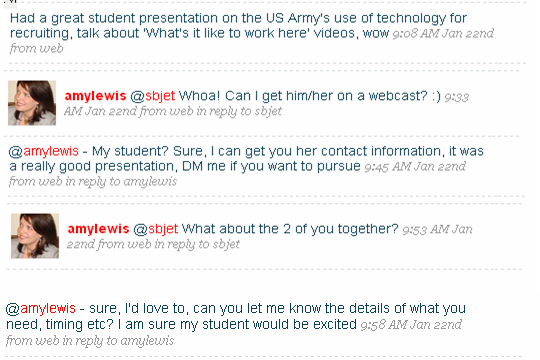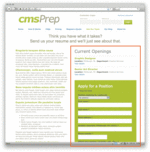Facebook, Twitter, and LinkedIn all have seen dramatic growth in the last year. The chances are extremely high that your employees are already engaged on one or more of these networks. And the chances are also high that your employees are interacting and engaging with each other on these platforms, during the 'normal' work day.
That is not necessarily a bad thing. Flickr - Zach Klein
Flickr - Zach Klein
In fact you could make the argument that staff engaging each other on these networks is really no different than them e-mailing each other, or talking on the phone. But there is a difference. Corporate e-mail and phone networks are essentially 'private', no one outside the organization can get in, the data and networks are secured and likely archived. Companies don't usually have to worry about inappropriate content or embarrassing revelations on the internal e-mail network. Contrast that with stories like this one - Virgin Atlantic Facebook scandal.
But the truth is that many (if not most) of your employees are going to continue to engage on social networks. As a company you have a few options available to address this situation:
1. Don't do anything, treat employees like adults, and manage performance and performance alone.
Whatever mechanism and tools employees use don't really matter, only results matter. Whatever information, learnings, and discourse take place on external social networks remains 'in the ether' so to speak.
2. Block employees from accessing Facebook, Twitter, LinkedIn and the like from the office
Estimates vary on the number of companies that block social networking sites. Last year the firm Challenger Gray & Christmas released a study claiming 25% of companies were blocking Facebook. Blocking these sites addresses your immediate concerns (time wasting, inappropriate content, etc.), but may spawn a new set of problems (employee dissatisfaction, Gen Y employees leaving, disconnecting staff from their networks that actually help them with their job duties). But if you feel like you have a problem that blocking these sites will solve, chances are you have more serious employee relations and performance issues.
3. Allow access to external social networks, but set and enforce guidelines as to their appropriate use
So you realize that staff are on these networks, and while you may not be ok with that, you understand it, and define and enforce guidelines for their use. Many organizations are going down this route, it is a more pragmatic approach that attempts to balance corporate and legal concerns with employee satisfaction. There are lots of examples in this area, a good one from the Higher Ed space is from DePaul University.
4. Develop or deploy a Corporate or Internal Social Network for your employees
This option recognizes the utility and attractiveness of social networking to your employees and attempts to harness that power and energy to drive increased productivity, knowledge management, and community building. If you are not familiar with corporate social networks, the simplest way to explain one would be 'Facebook for just your employees'. But that kind of description is certainly incomplete and possibly misleading.
Most corporate social network platforms start with the employee profile, a way for the employee to indicate personal and professional information about themselves. This profile information enables staff to 'find' each other, based on tags or keywords. This facilitates making connections with the right people for supporting a new project or initiative where specific skills are needed.
In addition to the profile, these platforms usually possess some type of collaboration tools, like blogs, forums and wikis to promote information sharing, discussions, and the development of a sustainable corporate knowledge repository. There typically is the ability for employees to upload and share content such as documents, images, and video. Also, chat and integrated IM may be included.
These platforms can be developed from widely available open source platforms, be licensed from one of many vendors in the spaces and deployed as a subscription-based service, or licensed and installed on the company's own servers and then deployed to employees.
This market is crowded, so I will hold off to another post getting into the details and vendor profiles, but I will say that it is an emerging market and one that deserves attention. But for a company that really wants to capture the value and promise of social networking to drive business results, the internal social network may just be the way to go.
 em all again here, but rather tell a simple, quick story of the real power and strength of Twitter for classes and students. One of the assignments in class is a presentation of a company or organization's application of technology to support or enhance a Human Resources process.
em all again here, but rather tell a simple, quick story of the real power and strength of Twitter for classes and students. One of the assignments in class is a presentation of a company or organization's application of technology to support or enhance a Human Resources process.


 Steve
Steve





